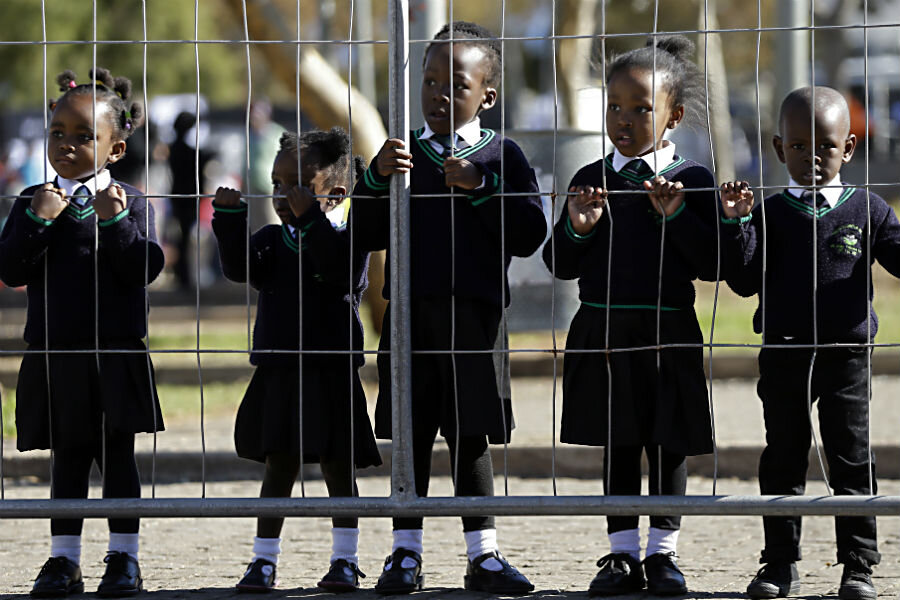Forty years after the Soweto uprising: How far has South Africa come?
Loading...
Known first as "Soweto Day" and now as "Youth Day," June 16 is a national holiday in South Africa, commemorating the historic moment in 1976 when nearly 30,000 students protested in Soweto, a neighborhood of Johannesburg described as the "heartbeat of the nation."
This year is special, not only because it brings South Africans to the 40th anniversary of that pivotal point in the struggle against apartheid, but also because South Africa once again finds itself rocked by student protests, though this time largely confined to university campuses.
While apartheid and white minority rule have crumbled, many are frustrated with the African National Congress (ANC), the party in power since 1994, when Nelson Mandela was voted into office. That sense of exasperation was in evidence as President Jacob Zuma gave a speech in honor of the Soweto uprising, his words echoing through a sparsely attended stadium.
"The struggle continues. We will never rest until we achieve a more equal society and prosperous society, and a society without poverty and unemployment," said President Zuma, according to the Telegraph. "By denying the majority of the population quality education, the apartheid regime disadvantaged the country and the South African economy immensely."
Forty years ago today, thousands of Soweto schoolchildren came out to protest racism and inadequate education, particularly the decision to impose Afrikaans, the Dutch-derived language of South Africa's white ruling class, into black classrooms.
Protesters waved banners with slogans such as "To Hell With Afrikaans," and "Afrikaans stinks," alongside more overtly political ones like "Vorster and Kruger are rubbish," referring to then-Prime Minister John Vorster, one of apartheid's architects, and the police minister Jimmy Kruger.
The juxtaposition of racism with poor educational standards "is an important one," Anne Heffernan, a post-doctoral fellow at the University of Witwatersrand, Johannesburg, writes for Quartz. "It speaks to how Soweto children began to straddle the space between local and immediate concerns and a national political agenda. This enabled them to transcend the issues of their classrooms and rejuvenate the struggle against apartheid on a national, and indeed international, scale."
Thus the protests morphed into something larger than anger at Afrikaans, embracing the overall inadequacy of education given to the country's black majority, their ineligibility to vote, and the denial of other basic rights.
The government responded with a crackdown. Hundreds died. And apartheid stumbled on for two more decades.
But it did end.
The vote that brought the ANC to power in 1994 did so amid the first all-race elections in South Africa. The country now boasts one of Africa's leading economies, and peaceful elections have taken place repeatedly over the past two decades.
Yet all is not well, as illustrated by the recent burning of school buildings by protesters, lamented in Zuma's speech.
"South Africans have cause to be angry," notes The Economist. The much-lauded economy has begun staggering. More than a quarter of South Africans are unemployed, and the rand has lost half its value against the dollar in the past five years.
There are political problems, too. The president is embroiled in a spending scandal, having failed to pay back public funds spent on his own home. Rumors suggest that his own senior officials are urging him to step down and, if he refuses, the party may try to oust him, as they did with his predecessor, Thabo Mbeki.
If South Africans are fed up with their rulers, however, they currently have few alternatives. The largest opposition party, the Democratic Alliance, suffers from its image as a white party. In 2014 elections, it won about six percent of the black vote – not ideal in a country whose population is 80 percent black.
Could protests, once again, lead to real change?
Certainly, today's activists have made some progress in shaping the conversation around education, but Dr. Heffernan says their weakness lies in a failure to connect more broadly.
"Today's students have struggled to move their activism beyond universities," writes Heffernan, arguing that they should learn from the students of 1976, who connected "the particular grievances of their own situation – the inequities and injustices of Bantu Education – to the structural oppression meted out by the apartheid state."






